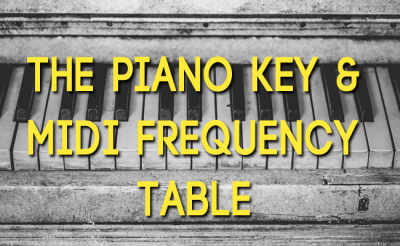Game of Sound
by Conway’s Game of Life
 The Game of Sound is a small project of mine where I combined a simple 11 by 16 step sequencer with the principles of Conway’s Game of Life. I used Max/MSP to program it and simple FM-synthesis to create the sounds.
The Game of Sound is a small project of mine where I combined a simple 11 by 16 step sequencer with the principles of Conway’s Game of Life. I used Max/MSP to program it and simple FM-synthesis to create the sounds.
Game of Life
Conway’s Game of Life is an automation that follows a predefined set of rules. It is build on a grid with rectangular cells where each cell has 8 neighbours. A cell can have two states, dead or alive. Dependent on the rules in every new round or iteration a cell either comes alive, stays alive, dies or stays dead. The rules are:
- A dead cell that has exactly three living neighbours comes alive
- A living cell with fewer than two neighbours dies
- A living cell with two or three neighbours stays alive
- A living cell with more then three neighbours also dies
For every iteration the rules are applied to every single cell and executed afterwards. For my Game of Sound I only use a small grid, 11 by 16 cells. For that reason, I connected the sides and the top and bottom with each other. You probably know old 2D games where your character disappears on the left side and magically reappears on the right side like in Pacman.
Based on the set of rules specific patterns appear that either stand still, alternate between two or more forms or even move, like the glider does. You can see a couple of them in my video. Make the Game of Life as complex as you want two.
FM-Synthesis
Every cell of the grid I connected to a sound. Horizontally, each line has the same pitch. Vertically, you hear the pentatonic scale which has no disturbing dissonances. To create the sound I use FM-synthesis. FM stands for frequency modulation. In FM-synthesis the frequency of an oscillator is modulated by another oscillator. By that approach a lot of interesting overtone structures can be created.
There are two main parameters in frequency modulation, ratio and depth. Ratio stands for the ratio between the frequencies of the modulator and the carrier. If the carrier, your basis frequency, has 400 Hz and your modulator 1600 Hz the ratio between them is 4. Each ratio has a specific sound. Experiment with it to get some interesting results.
Understanding the parameter depth you most likely will understand the principal of FM-synthesis much better. The depth correlates with the amplitude of the modulator. Lets say your modulator has a amplitude of 5 and your carrier has a frequency of 400 Hz. In that case the frequency of the carrier modulates between 395 and 405 in the speed of the frequency of the modulator.
Besides FM-synthesis I use a stereo-delay to create more interesting sound fields. Watch the video below to get an impression of how it works and looks like. Enjoy.






Leave A Comment